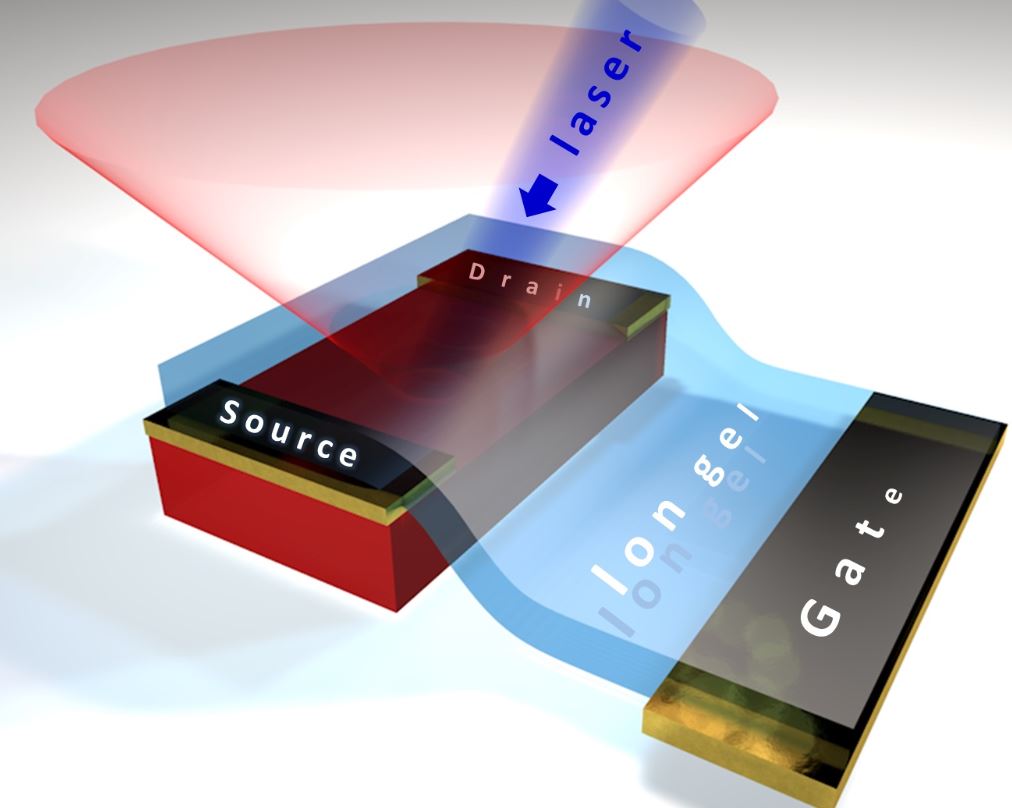
Researchers have discovered a new way to control light that comes from exotic crystal semiconductors. They say their new way could lead to more efficient solar cells. It could also lead to other advances in electronics.
The scientists, from Rutgers University, the University of Minnesota, and the University of Dallas, wrote about their work in the journal Materials Today (citation below). The authors were Hee TaekYi, Sylvie Rangan, Boxin Tang, C.Daniel Frisbie, Robert A.Bartynski. Yuri N.Gartstein, and Vitaly Podzorov.
Their discovery involved ‘hybrid perovskites,’ which consist of interlocking inorganic and organic materials. These materials have shown significant promise for use in solar cells.
Their discovery may also lead to new electronic sensors, displays, and other devices. Specifically, devices that are activated by light.
Their finding may also bring greater efficiency at a lower cost to optoelectronics manufacturing, which harnesses light.
The researchers found a novel way to control the photoluminescence that is emitted when a laser excites the perovskites. Photoluminescence is light emission from any kind of matter after the absorption of photons (electromagnetic radiation).
Controlling hybrid perovskite crystal light intensity
It is possible to increase the light intensity that a hybrid perovskite crystal can emit by a factor of ten by adjusting the voltage applied to an electrode on the surface of the crystal.
Senior author Vitaly Podzorov, a Professor at Rutger’s Department of Physics and Astronomy, said:
“To the best of our knowledge, this is the first time that the photoluminescence of a material has been reversibly controlled to such a wide degree with voltage.”
“Previously, to change the intensity of photoluminescence, you had to change the temperature or apply enormous pressure to a crystal, which was cumbersome and costly. We can do it simply within a small electronic device at room temperature.”
Perovskites have properties that lie between those of non-conducting insulators and conducting metals. It is possible to tune their conductivity in an extremely wide range, thus, making them indispensable for all electronics today.
Fruits of research in semiconductor physics
Prof. Podzorov said:
“All the wonderful modern electronic gadgets and technologies we enjoy today, be it a smartphone, a memory stick, powerful telecommunications, and the Internet, high-resolution cameras or supercomputers, have become possible largely due to the decades of painstaking research in semiconductor physics.”
According to a Rutgers University press release:
“Understanding photoluminescence is important for designing devices that control, generate or detect light, including solar cells, LED lights and light sensors.”
“The scientists discovered that defects in crystals reduce the emission of light and applying voltage restores the intensity of photoluminescence.”
Hybrid perovskites are much cheaper and easier to make compared to standard commercial silicon-based solar cells. They are also significantly more efficient.
This study may help encourage their use, Prof. Podzorov believes.
The next step will be to investigate different kinds of perovskite materials. Hopefully, the research will lead to more efficient and better materials in which we can control photoluminescence in a wider range of intensities. Maybe we will also be able to use smaller voltages, Prof. Podzorov added.
In January 2019, a team of British scientists reported on new materials that could boost the performance of PSCs. The letters PSCs stand for Perovskite Solar Cells.
Citation
“Electric-field effect on photoluminescence of lead-halide perovskites,” Hee TaekYi, Sylvie Rangan, Boxin Tang, C.Daniel Frisbie, Robert A.Bartynski. Yuri N.Gartstein, and Vitaly Podzorov. Materials Today (2019). DOI: https://doi.org/10.1016/j.mattod.2019.01.003.
Video – What is solar energy?
Solar energy, which uses solar cells, involves capturing the energy in sunlight and converting it into electricity.
